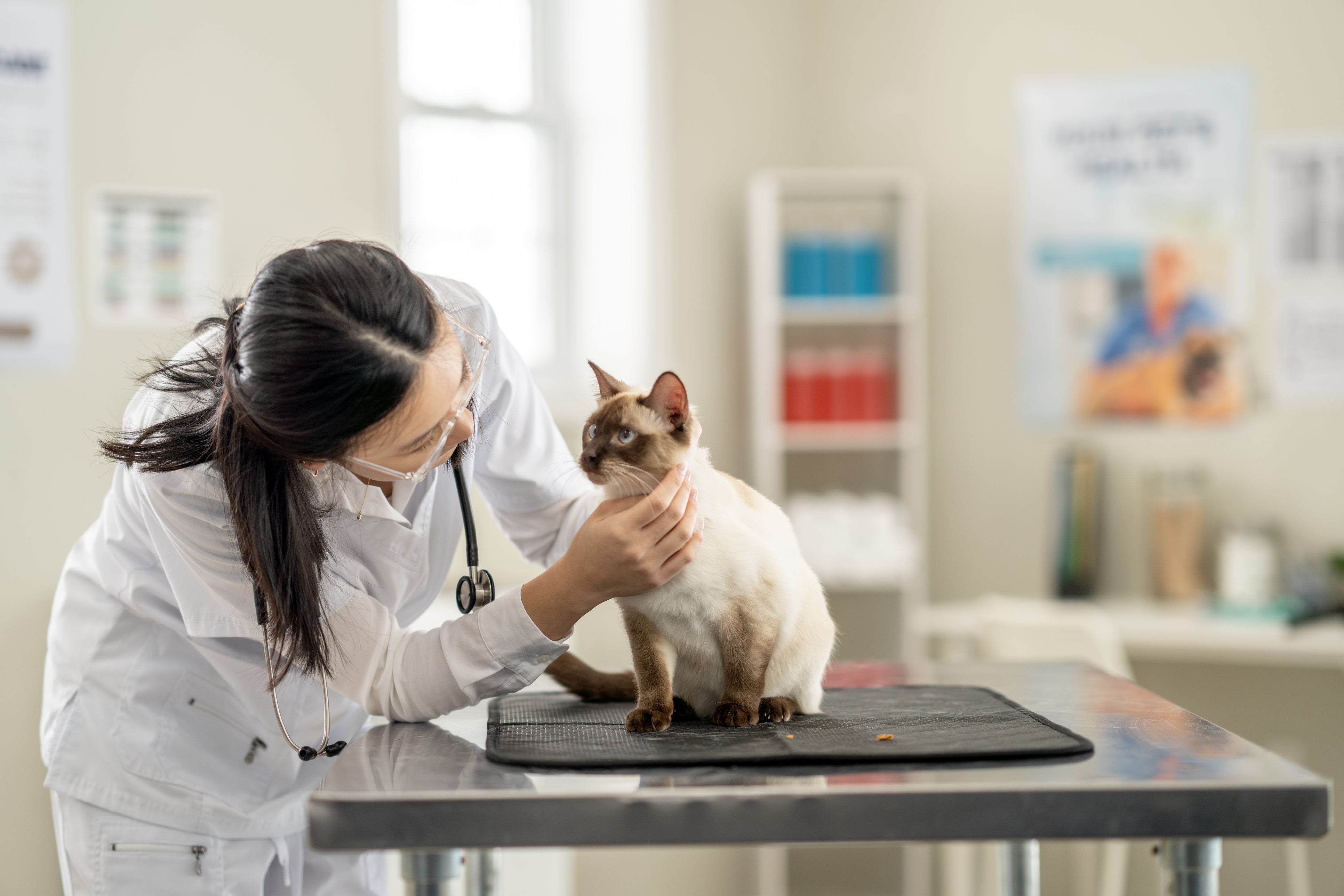Kidney Disease in Cats: What Symptoms Should You Watch For?

Kidney issues are among the most common health problems in cats, especially as they age. Early detection can make a big difference in your cat’s comfort and longevity.
This blog will walk you through the key symptoms of kidney problems in cats so you can be proactive in recognizing when something's wrong.
Key Takeaways
-
A cat’s kidneys are essential for filtering waste, maintaining fluid and electrolyte balance, regulating blood pressure, and supporting red blood cell production.
-
When the kidneys can’t function properly, waste and fluids begin to build up, triggering a range of health symptoms.
-
Ongoing kidney decline can lead to noticeable symptoms and may result in serious conditions such as kidney (renal) disease. Please consult your veterinarian if you notice any early symptoms.
What Do the Kidneys Do?
A cat’s kidneys play a crucial role in filtering waste from the blood, regulating hydration and blood pressure, balancing electrolytes, and producing hormones essential for red blood cell production. When kidney function declines, waste and fluids can accumulate in the body, leading to a variety of symptoms and potentially progressing to kidney (renal) disease.
Early Signs of Kidney Problems in Cats
These signs are often easy to miss but are crucial for catching kidney disease early:
1. Increased Thirst (Polydipsia)
One of the most common first signs is increased thirst. If your cat is suddenly drinking from unusual places, like faucets, bathtubs, or toilet bowls, it may be a red flag.
2. Frequent Urination (Polyuria)
You might notice larger or more frequent clumps in the litter box. Despite peeing more, the cat may still be dehydrated. If you notice any unusual clumps in your cat’s litter box, it’s a good idea to keep a record and discuss it with your veterinarian.
BOXIE TIP: Promote healthy litter box habits and help prevent potential issues with Boxie® Glo™. Its UV sparkle gently draws cats to the litter box, creating an inviting and comfortable experience that encourages consistent use.
3. Weight Loss
Even if your cat seems to have a good appetite, slow, steady weight loss can be a sign of an underlying issue like kidney dysfunction.
4. Decreased Appetite
A loss of interest in food, especially favorite treats, can point to nausea or toxin buildup caused by impaired kidney function.
5. Lethargy or Low Energy
A cat with early kidney issues may sleep more, play less, or seem “off” or withdrawn.
These symptoms can also mean other illnesses. See here for a blog that tells you how to tell if your cat is sick. If unsure, please consult your veterinarian.
Mid-to-Late Stage Symptoms
As kidney function declines further, symptoms become more pronounced and affect multiple body systems:
Vomiting and Nausea
Toxin buildup in the blood can cause frequent vomiting, gagging, drooling, or lip-smacking.
Bad Breath with a Metallic or Ammonia Smell
This is a sign of uremia, which is the accumulation of waste in the bloodstream.
Poor Coat Quality
A dull, scruffy, or greasy coat can be a subtle but telling sign of illness.
Mouth Ulcers
You may see sores on the gums or tongue, or your cat may flinch when eating or grooming.
Constipation or Diarrhea
Both can occur as a result of dehydration and toxin buildup.
Signs of Advanced or Severe Kidney Dysfunction
These signs are more serious and often indicate late-stage disease or a sudden worsening (acute kidney injury):
-
Severe weakness or inability to stand
-
Very low or no urine output
-
Seizures or disorientation
-
Collapse or unresponsiveness
-
Cold limbs or low body temperature
-
Hiding and avoiding interaction
When to See a Vet
You should call your veterinarian if you notice any of the following:
-
Drinking more than usual
-
Frequent or unusually large urination
-
Changes in appetite or weight
-
Vomiting more than once in 24 hours
-
Any signs of lethargy or behavioral changes
Your vet may run bloodwork and a urinalysis to evaluate kidney values like creatinine, BUN, and SDMA, a newer marker that can detect kidney disease earlier than traditional tests.
FAQ
What do a cat’s kidneys do?
A cat’s kidneys filter waste from the blood, regulate hydration and blood pressure, balance electrolytes, and produce hormones that help create red blood cells.
What happens when a cat’s kidneys stop working properly?
When kidney function declines, waste products and excess fluids build up in the body, which can lead to symptoms such as lethargy, vomiting, weight loss, and changes in urination or thirst.
What are the signs of kidney disease in cats?
Common signs include increased thirst and urination, loss of appetite, weight loss, bad breath, and general lethargy. If you notice any of these, consult your veterinarian.
Is kidney disease in cats treatable?
While chronic kidney disease isn’t curable, early diagnosis and proper management can slow its progression and improve your cat’s quality of life. Treatment may include diet changes, hydration support, and medication.
How can I help prevent kidney issues in my cat?
Regular vet check-ups, providing fresh water daily, feeding a balanced diet, and monitoring litter box habits can help detect and potentially prevent kidney problems early.
- Tags: Whisker Wellness


